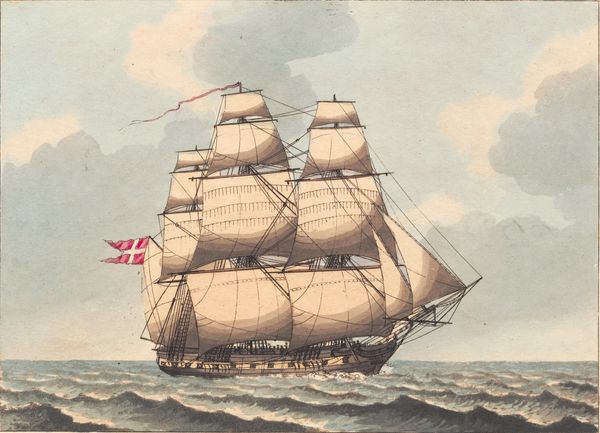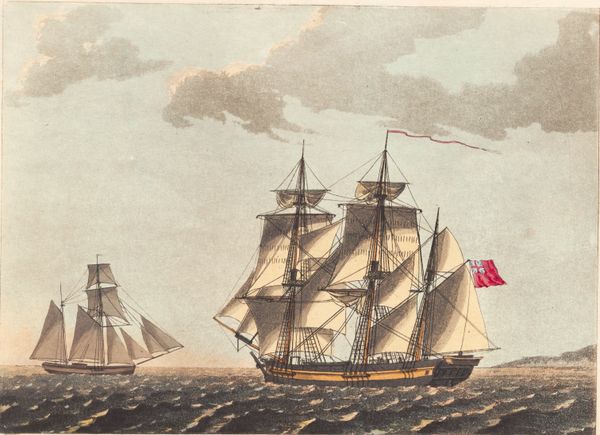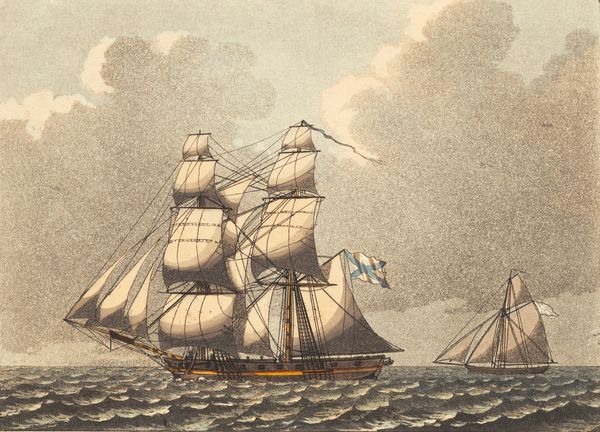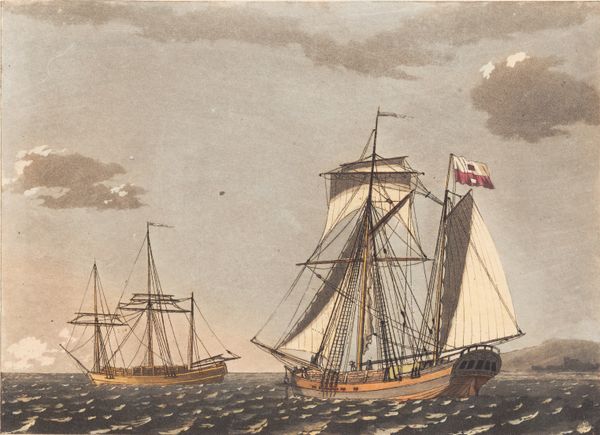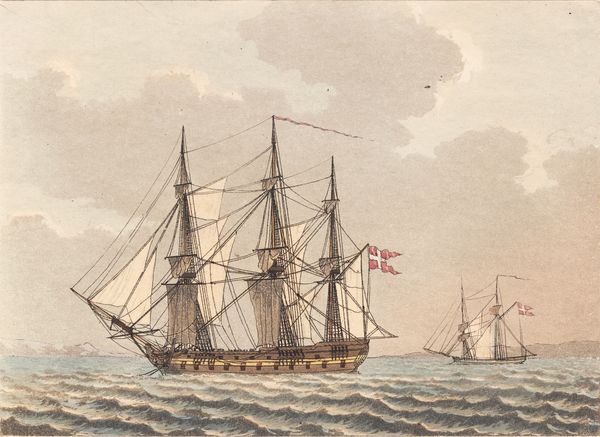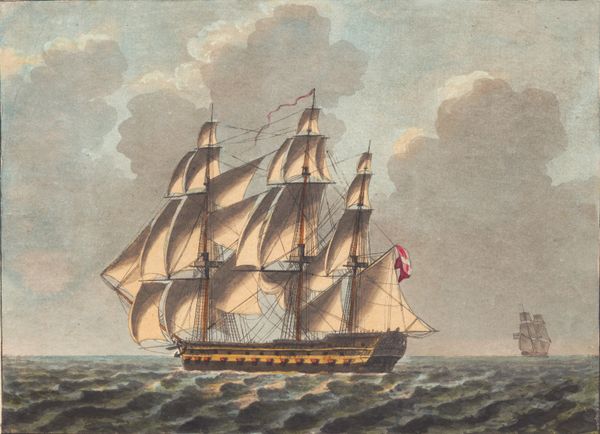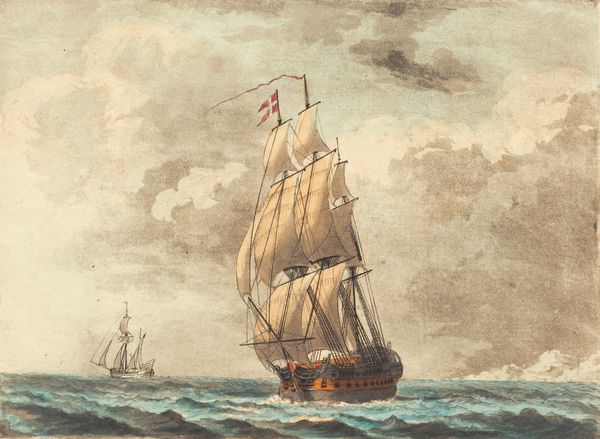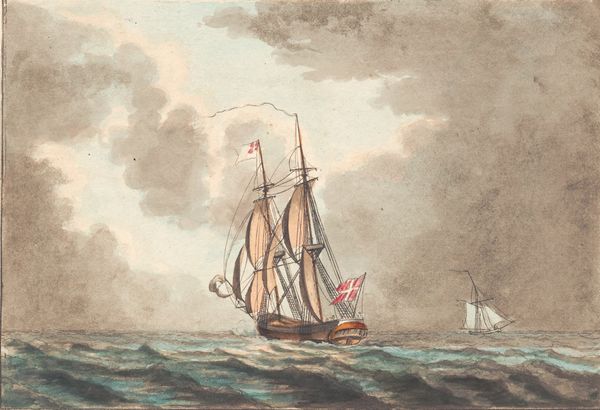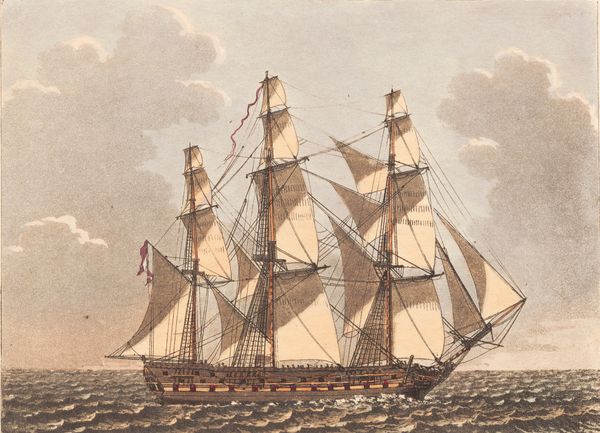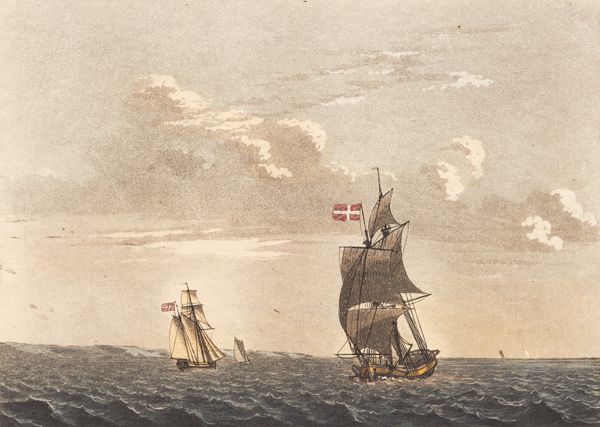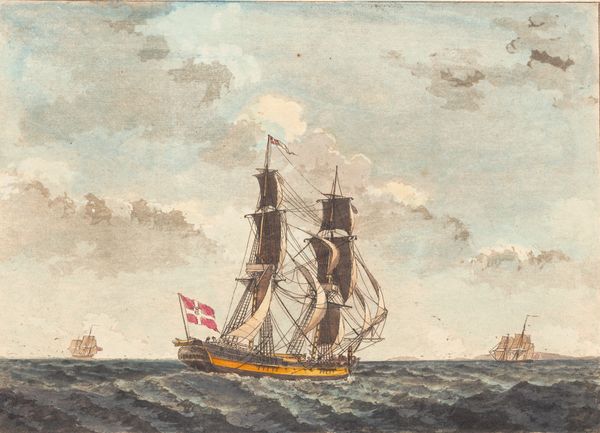
aquatint, print, watercolor
#
aquatint
# print
#
landscape
#
watercolor
#
romanticism
#
watercolour illustration
Dimensions: 188 mm (height) x 233 mm (width) (bladmaal), 160 mm (height) x 215 mm (width) (plademaal), 141 mm (height) x 194 mm (width) (billedmaal)
Curator: This is "En dansk cutter at see i læ, med sidevind" or "A Danish Cutter Seen in Lee, With a Side Wind," an aquatint and watercolor created around 1805 by Niels Truslew. It resides here at the SMK, the Statens Museum for Kunst. Editor: The neutrality of tones almost obscures what must have been a dynamic, open ocean experience. Curator: The use of aquatint certainly lends a unique texture. See how it creates these subtle gradations, especially noticeable in the sky? It allows for a very even tonal range, contrasting with the watercolor's more fluid application. Editor: It does add a layer of atmospheric complexity. Given the period, just after the Battle of Copenhagen, this image might be read in the context of national pride. A symbol of maritime power on view, despite the nation's recent defeat at sea? Curator: That's plausible. The placement of the Danish flag and the way it seems to ripple with energy—not just in the wind but perhaps metaphorically representing a national spirit – seems intentional. But consider also the geometry, how the sails create almost perfectly balanced triangles pointing to an apex toward the center of the composition. Editor: Good point, this structured formality underscores the Romantic fascination with nature, yes, but filtered and framed through this idealized national identity. One is always striving to synthesize individual feeling with this complex set of social and political realities. It serves a purpose and thus reflects those tensions in its very materiality. Curator: Indeed. To parse its composition along structural lines alone is insufficient. A richer understanding emerges when we anchor our insights with an analysis that encompasses socio-historical contingencies. Editor: For me, it's the combination, seeing how both formal elements and context coalesce into something affecting, allowing an audience to participate in their relationship with their world. Curator: A beautiful intersection of line, tone, and history, then? Editor: Agreed, quite illuminating.
Comments
No comments
Be the first to comment and join the conversation on the ultimate creative platform.
